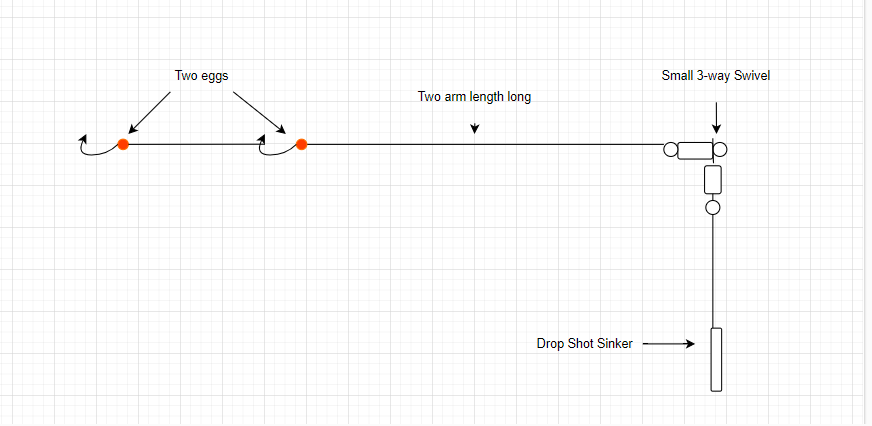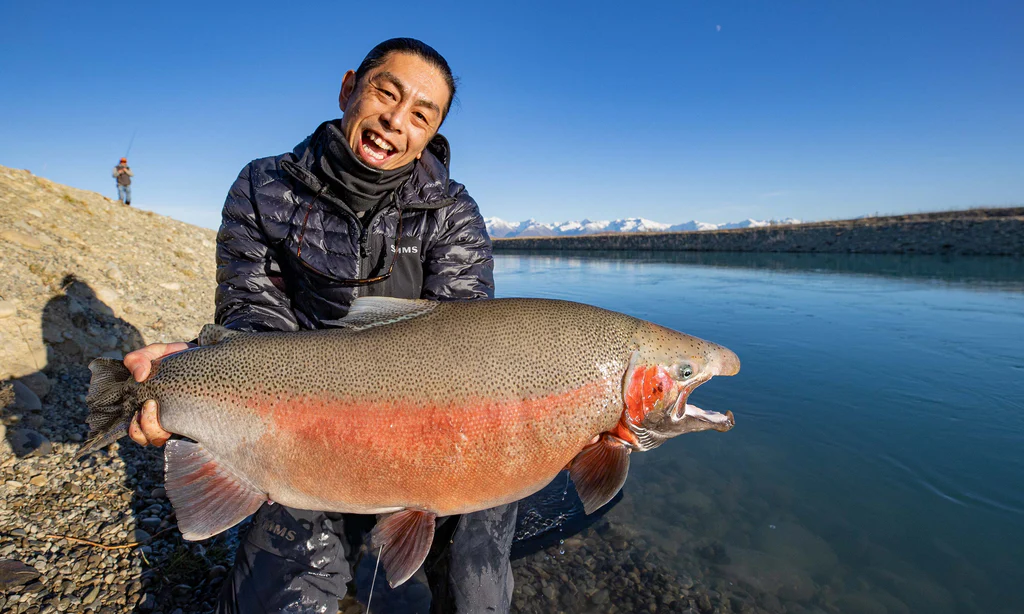Fishing in New Zealand offers a variety of techniques suited to the diverse landscapes and waterways found across the country. One particularly unique and effective method, especially for those targeting trout, is egg rolling the canals. This technique leverages the natural behavior of fish and the distinctive features of canal systems to enhance your fishing success. Here’s a guide to understanding and mastering egg rolling the canals.
For more information on fishing regulations, licenses, and tips, be sure to visit the Fish & Game New Zealand website.
What is Egg Rolling?
Egg rolling is a specialized fishing technique that involves rolling or drifting egg-shaped lures or baits through a canal system. This method is particularly effective in New Zealand’s canal fisheries, where trout are known to be abundant and responsive to this approach.
Why Egg Rolling?
- Effective for Trout: Trout are naturally inclined to feed on eggs, particularly during the spawning season when eggs are a significant part of their diet. Egg rolling mimics this food source and can be highly effective in enticing trout.
- Big Fish Tend to Be Lazy: In the canals, the larger trout often exhibit a more relaxed feeding behavior. They prefer to wait for food to drift towards them rather than actively pursuing it. This behavior is influenced by the abundance of prey fish and the pellets that fall through the salmon cages in the canal systems. By presenting an egg-shaped lure that drifts naturally, you’re aligning with their feeding habits and making it easier for them to take the bait.
- Works Well in Canals: New Zealand’s canal systems, especially in areas like the South Island’s Canterbury region, provide ideal conditions for egg rolling. The canals’ consistent flow and depth create perfect environments for this technique.
How to Egg Roll the Canals
1. Gear and Tackle
- Rod and Reel: A medium to light spinning rod with a sensitive tip is ideal for detecting subtle bites. Pair it with a matching reel that has a smooth drag system. 7-8ft rod for long distance casting
- Line: Use a high-quality monofilament or fluorocarbon line with a test strength suitable for the size of the trout you’re targeting, usually around 4-8 lb test.
- Egg Lures/Baits: Use imitation eggs or globugs designed to resemble trout eggs. These can be either artificial or real eggs. Artificial globugs are particularly effective due to their bright colors and texture, mimicking the appearance of natural eggs.
- Rigging: Use a small 3-way swivel with the main line for the egg about two arm lengths long and the line for the weight about an inch or two long. At the end of the main line tie on a small hook that fits the imitation eggs (if using imitation eggs). You can have two eggs on your rig by tying on another line on the hook that would be around 30 or less cm long. The weight that will be used is a drop shot weight. Use the weight that would be carried by the flow of the canal, sometimes the canal is fast and slow so always carry some extra weights to change in different conditions.

2. Color Choices for Different Conditions
- Clear Water: In clear water conditions, opt for natural colors such as pale pink, white, or cream. These colors closely resemble the appearance of real trout eggs and are less likely to spook wary fish.
- Murky Water: For murky or stained water, use bright colors such as fluorescent orange, chartreuse, or hot pink. These colors stand out more effectively in low-visibility conditions and can attract fish that are otherwise harder to see.
- Bright Sunshine: During bright, sunny conditions, colors like white or pale yellow can be effective, as they reflect light well and mimic the appearance of eggs in sunlight.
- Overcast or Low Light: In overcast or low-light conditions, darker colors such as dark pink, red, or even purple can be more visible to fish. These colors provide a contrast against the darker water, making them easier for fish to spot.
3. Techniques for Rolling
- Casting: Cast your imitation egg or globug upstream, bring your rod high up, and once the weight is touching the bottom let it drift naturally with the current. The goal is to allow the egg to roll and bounce along the canal bed, mimicking the natural movement of eggs in the water.
- Drifting: Allow the egg to drift slowly downstream. The rolling motion should create a natural presentation that attracts trout. Pay attention to how the lure moves and adjust your casting and retrieval techniques to achieve the desired effect.
- Observation: Watch for subtle changes in your line or rod tip, which could indicate a bite. Trout might be cautious, so a light touch is often needed to detect their interest.
4. Timing and Location
- Timing: Egg rolling is particularly effective during the trout spawning season, which usually occurs in late autumn and early winter. During this time, trout are more likely to be feeding on eggs.
- Location: Focus on areas with consistent flow and depth, such as deeper sections of the canal or near structures like rocks and submerged vegetation. Trout often congregate in these areas, making them prime spots for egg rolling.
5. Regulations and Conservation
- Check Local Regulations: Ensure you’re aware of and adhere to local fishing regulations regarding the use of egg lures and bait. Some areas may have specific rules about bait and lure types.
- Practice Conservation: Respect the environment and practice catch and release where appropriate. By following conservation guidelines, you help preserve the health of fish populations and the quality of the fishing experience for others.
Benefits of Egg Rolling
- Targeted Fishing: Egg rolling is a targeted method that can be highly effective when trout are actively feeding on eggs. It allows anglers to present a natural food source in a way that is difficult for trout to resist.
- Enjoyable Technique: The rolling motion and the anticipation of a bite make egg rolling an engaging and enjoyable fishing technique. It adds variety to your fishing methods and can lead to rewarding catches.
Conclusion
Egg rolling the canals is a unique and effective technique for trout fishing in New Zealand, offering a specialized approach to target trout during their spawning season. By using the right gear, mastering the technique, and selecting the appropriate colors for different conditions, you can enhance your fishing experience and enjoy the satisfaction of a successful catch. Whether you’re a seasoned angler or new to the technique, egg rolling provides an exciting opportunity to explore New Zealand’s canal fisheries and make the most of your time on the water.
For more information on fishing regulations and local conditions, visit the Fish & Game New Zealand website.
